Saoirse: “When I got Ableton Push, everything changed. I could get stuff down so quickly that I found myself writing a couple of tracks a day”
A born-to-be radio host and DJ, Saoirse's switch to production came just as naturally. Danny Turner explores her hard-hitting, bass-driven sound
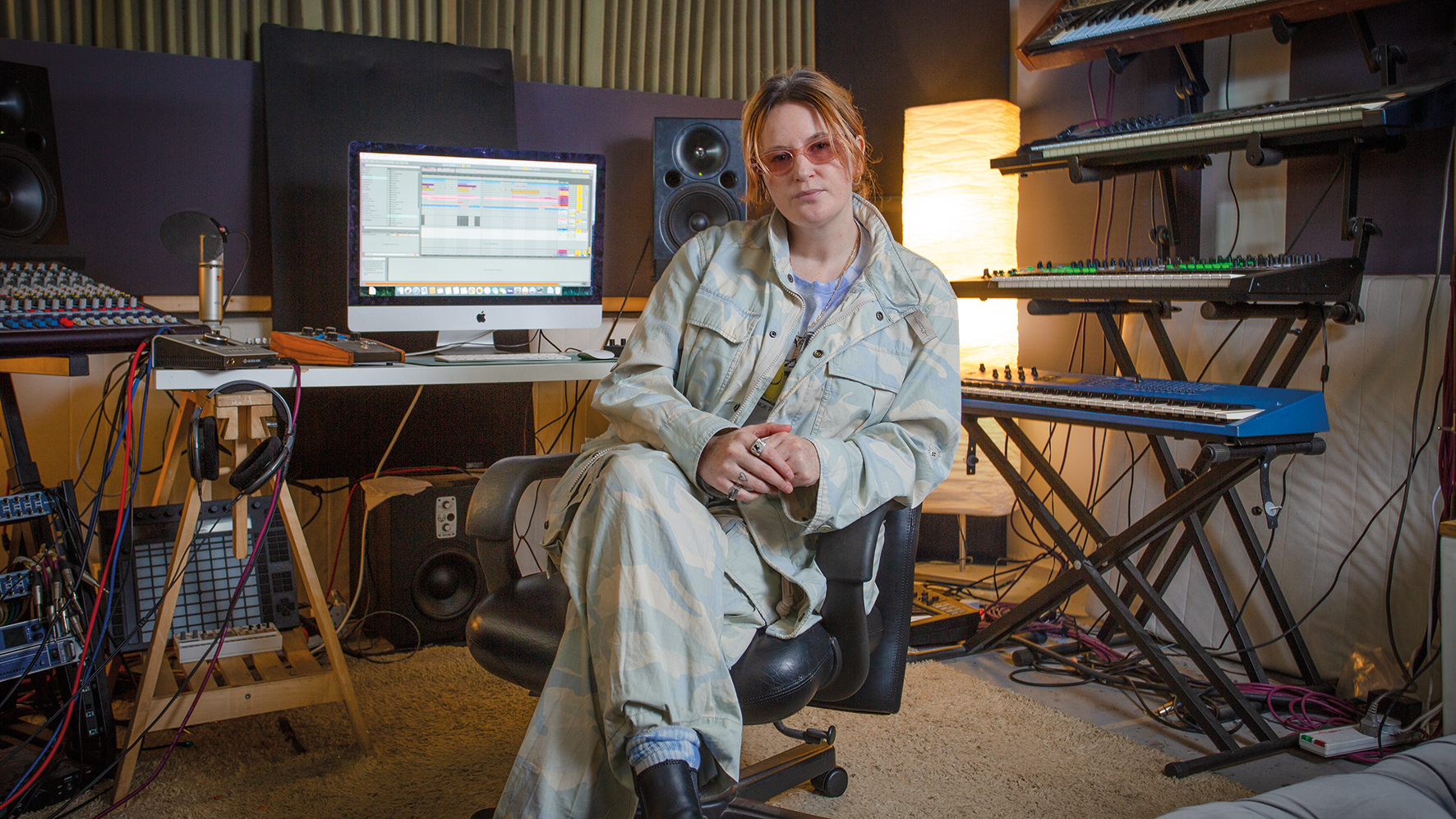
From an early age, Saoirse was infatuated by the sounds coming out of her radio – so when the time came to pick a trade, a sound and media course to get her foot in the broadcasting door was a no-brainer.
She went on to work in pirate radio before landing her own show at Ireland’s leading media broadcaster RTÉ, later leading to residencies at Rinse FM and, finally, her dream job at Radio 1.
Meanwhile, Saoirse was already making a name for herself on the live DJ circuit, with her diverse record bag garnering bookings for scores of parties and festivals. Previously, the Irish-born DJ had only experimented with production, but when the pandemic hit the live circuit and left her twiddling her thumbs, she suddenly had time to add another string to her bow.
Sharing a studio with a couple of friends, after a year or two of blood, sweat and tears, the release of her debut EP Trust arrived last year on Saoirse’s own trUst label. This was followed by the three-track EP Two Bruised Egos earlier this year. Grounded on her cumulative knowledge of DJing and deep-seated love for rave, hard house and trance, both EPs have received early acclaim from club goers and critics alike.
We understand that it was your mother who got you into raving back in Ireland. What sort of events were you attending and from what age?
“She was organising ‘free parties’ as they were called back then – illegal events at beaches and all sorts. I must have started going to them when I was seven or eight years old and began attending a lot more of them myself by the time I was 15. Then I started going to big mega-raves like Creamfields and the Point Depot that did big trance events like Cream and Gatecrasher. I went to Ibiza for the first time when I was 17 on a two-week holiday and followed that up with two seasons that lasted about five months each.”
You grew up at the tail end of vinyl’s demise. Were you still able to catch the vinyl-collecting bug?
Want all the hottest music and gear news, reviews, deals, features and more, direct to your inbox? Sign up here.
“Absolutely – I was kind of late coming into the digital side. I got my first set of turntables when I was 14 and started working at a record store in Dublin called Abbey Discs a few years later. That was one of the few record stores at the time where you could buy club music, and because I worked there for a few years I was able to collect a lot of records. CDJs were super-expensive to buy back then – we couldn’t afford anything like that in our house. At one point there seemed to be a real demise in vinyl where you couldn’t even get anything on record anymore, which is when I was forced to switch over to CDs.”
What artists were you collecting?
“A lot of techno and I was a huge trance fan when I lived in Ibiza. I was into Jeff Mills and Dave Clarke, so I liked the hard side of techno – the tribally stuff. Then I went down the progressive route and got into Global Underground, Sasha and John Digweed, which filtered into house music, minimal and where I am with my sound today.”

Are you pleased to see vinyl coming back in a big way?
“I felt like it was doing really well but when the big pop stars decided they wanted to start releasing vinyl that fucked the smaller independent labels. Now the people who play club music have to wait three to five months to get something pressed somewhere, so it’s become a nightmare for those of us who genuinely want to play out records. The only thing that will help the situation is if more pressing plants open or huge labels stop pressing so much vinyl.”
Do you find it ironic that just when smaller independents and artists have a chance to make physical income the big labels burst the balloon?
“I don’t know if they even know, or care, about the impact it’s having on independent record stores. People aren’t going to them as much anymore because it takes too long to get any new product in there. I still play a lot of vinyl and probably spend half of my fees every month on bloody records [laughs] – it’s a tangible passion that I can’t ever imagine ending. Thankfully, there are plenty of record stores in London that sell a lot of second-hand bits so I can still go for a good dig and some independent sellers sell stuff from their own houses too.”
You attended a sound and media course. What area of the industry were you hoping to break in to?
“That was for radio engineering and learning how to produce radio shows. I’ve been obsessed with radio since childhood. I knew all the DJs, when their shows were and used to record loads of tapes. It sounds ridiculous, but I used to call in to the morning breakfast shows on the really big stations so often that they virtually knew me by name! From a very young age I felt that being on the radio was what I wanted to do and going to a radio college seemed a very natural way to achieve that.”
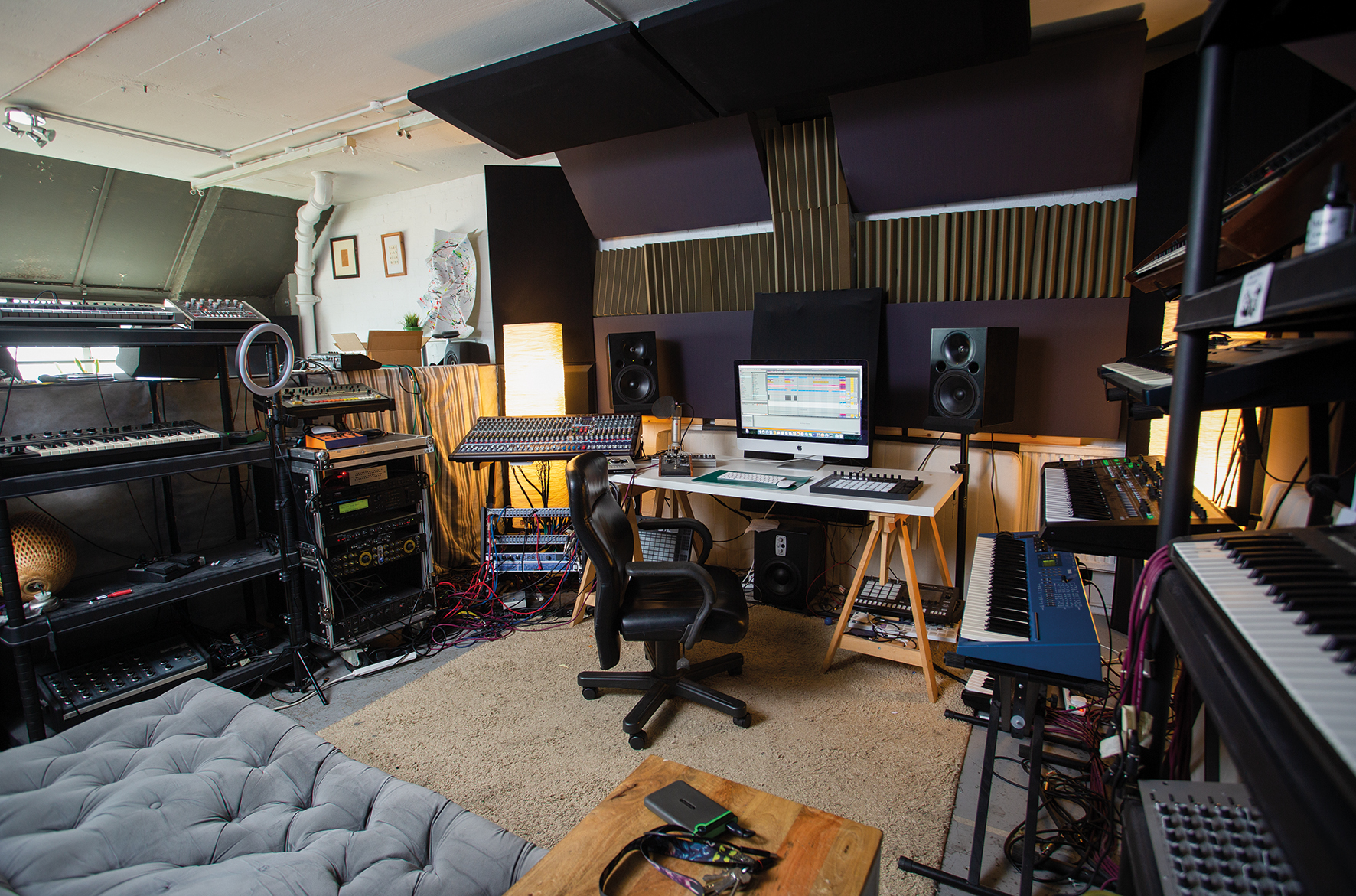
How did that evolve into you eventually becoming a DJ on Radio 1?
“I soon realised that the radio I wanted to do was not something I needed to study for, so I left college and started doing pirate radio. I did that for years and was on so many stations that RTÉ asked me to come in for a trial and eventually gave me an opportunity to work there. Recording a show in a proper studio was very exciting, but I moved to London and went back to pirate radio before ending up on Rinse FM and then Radio 1.
“Rinse FM still had that pirate vibe, you’d do everything yourself and just crack on, but working for the BBC was obviously much more professional. The shows were pre-recorded, chopped up and edited by a producer. I had to write scripts and do a lot of preparation, which took a bit of getting used and felt a bit surreal considering how I grew up listening to the station.”
So much of media has changed, yet radio seems to have remained relatively unchanged…
“What has changed is that when radio was on FM you couldn’t actually tell how many people were listening in, whereas now it’s very much based on who listens back to it rather than who’s listening live. The streaming aspect of it is what it’s all budgeted on now.”
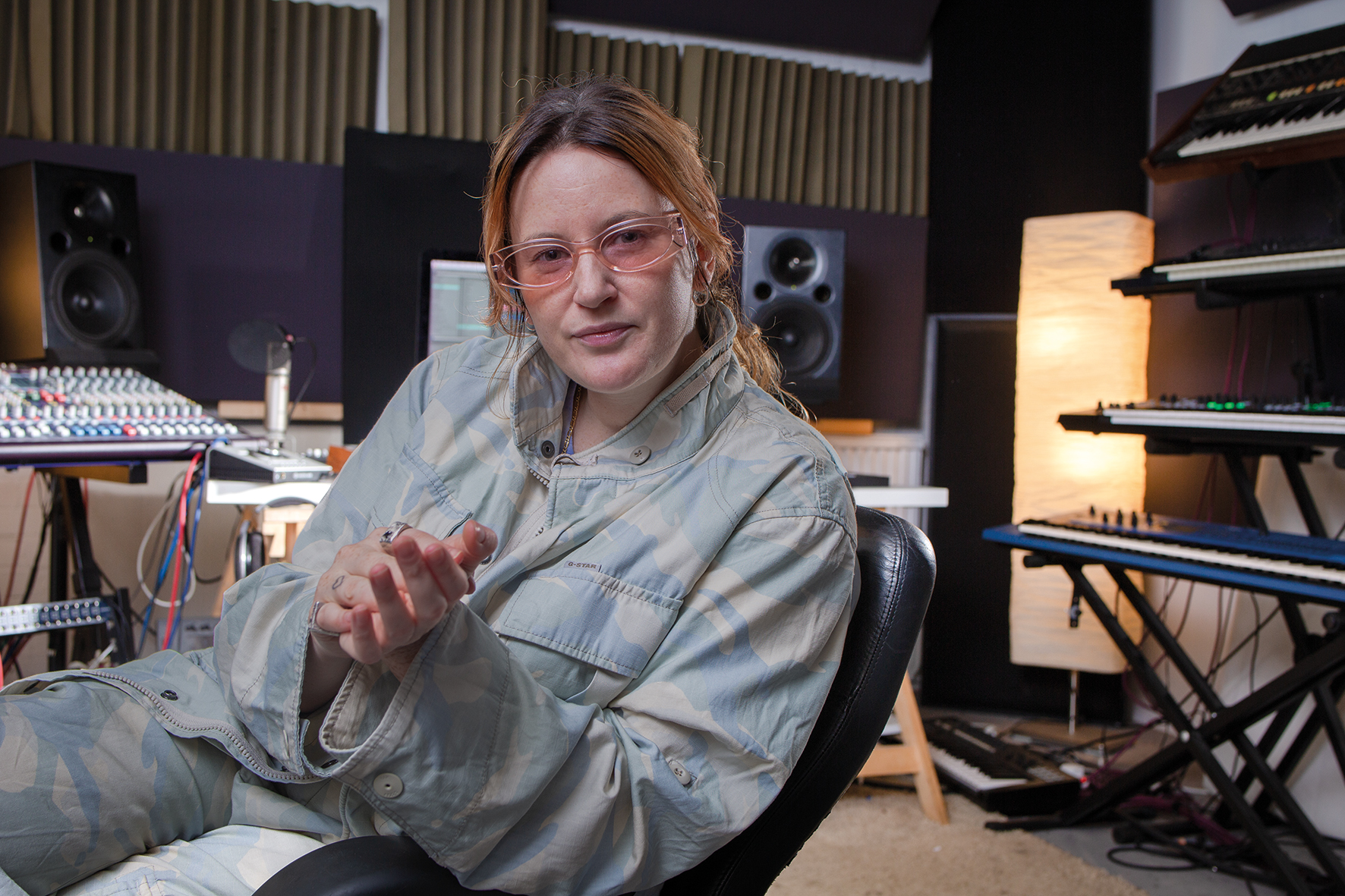
You’re also a club DJ. What’s your take on how DJs have to present themselves as ‘personalities’ these days?
“I don’t think there’s a set answer for that. People argue that it should be just about the music but I don’t agree – it should be about how the individual wants to present themselves. If they do a good job and people engage and like it, that’s great, and some people like to get to know the character behind the DJ booth. Everyone’s an individual and someone might have the type of character that makes that element of their performance amazing, whereas with a DJ like Jeff Mills you’re getting such a good techno set you don’t need to be given anything else.”
What’s your usual DJ setup?
“I have a standard setup comprising two vinyl turntables and two club-standard Pioneer CDJs. I use an Allen & Heath Xone:96 mixer that has a great preamp and the vinyl sounds so good going through it. Over the past few years I’ve been struggling to get the vinyl to compete with the dynamics of a digital setup, particularly in terms of the volume.
I was in the studio for eight to 15 hours every day
“I’ll often turn up and someone’s already red lined digitally so I’ll have to turn the volume down or the vinyl will start feeding back. Thank god for this mixer though because there’s still a lot of music that I can’t get digitally and it’s allowed me to bring the vinyl back again.”
Presumably, it was the pandemic that forced you to take a break from DJing and pivot to production?
“Since the age of 14 I’ve always had a job and been working full-time and touring as a DJ. Because of that, I’d never really dedicated myself to production. I used to have a small home setup with cheap monitors, a MIDI keyboard and a couple of little bits but I couldn’t do much there.
“I did try using Ableton every now and then, but during the pandemic I had the time to put the effort in for the first time in my life and was down in the studio for eight to 15 hours every day. Sometimes I’d even stay overnight and sleep on the sofa bed because it was dead on the street and dead in the studio.”
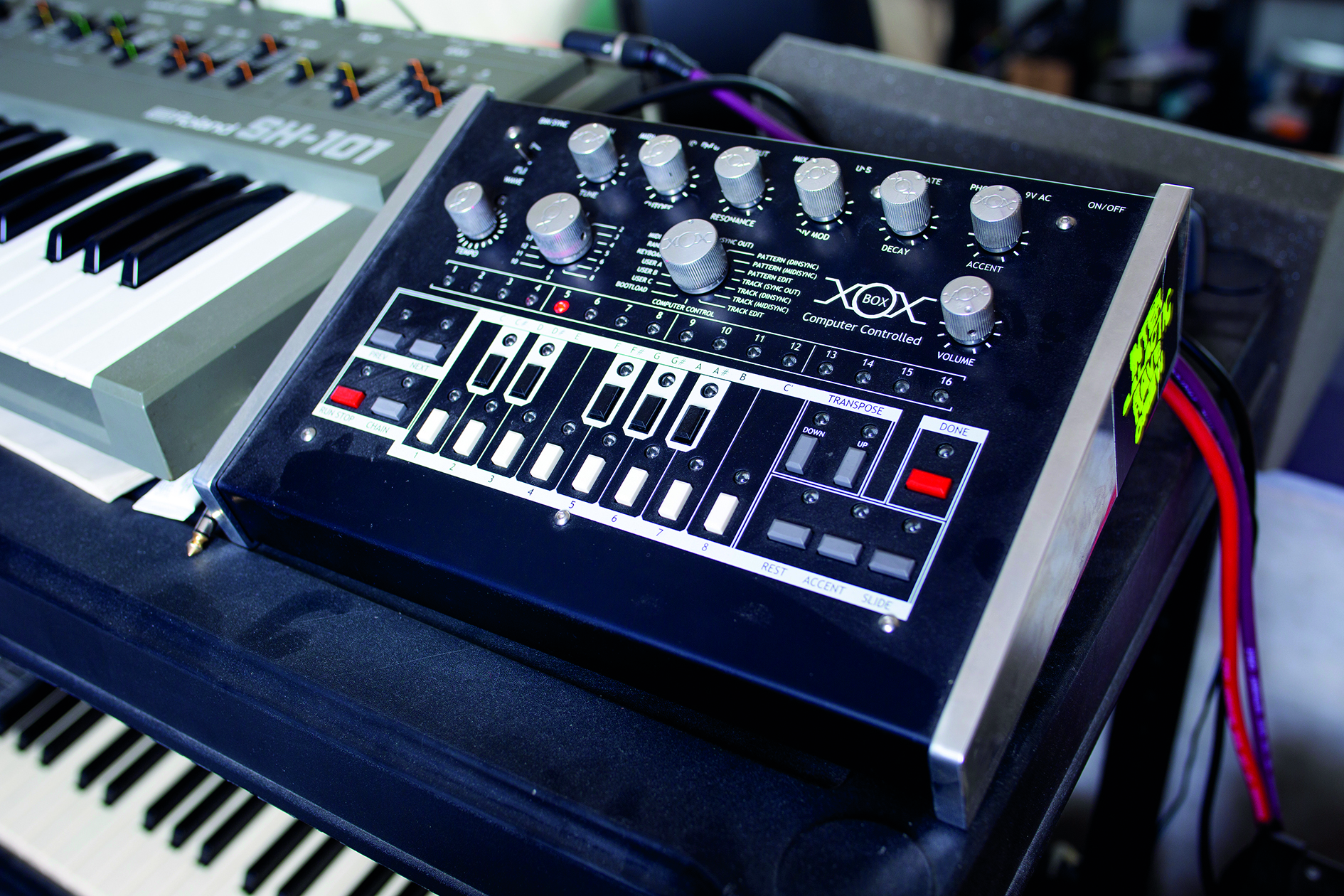
Is it a shared space?
“My housemate Alex Anderson of Inner Zone was a big synth collector, so I started sharing his studio with one other person, buying my own gear and putting it in there. We basically put all of our instruments together and throughout Covid I finally had the time to check out the gear they had and began zoning in on instruments, jamming stuff and recording a sound that felt very suited to me.”
What’s the studio layout like?
“It’s a big space with windows and everything and we’ve got the sound proofing down so the room’s got a nice flat sound. There’s a lot of gear in here between the three of us, but the things I use in nearly all of my records are the Kawai K5000, a Yamaha CS1x and a Roland JV-2080 rack. There’s quite a bit of analogue gear here, but I’ve slowly discovered that I lean more towards the digital-sounding stuff. I really like FM synthesis – it’s so electronic-sounding.”
Where did you start when it came to creating your debut EP Trust back in 2021?
“As I mentioned before, it all started for me with Ableton and a MIDI keyboard alongside soft synths like FM8. I had Maschine for a while too but never really got a hang of it. It was when I got Ableton Push that everything changed. I used to play drums and guitar and when I DJ I’m obviously always playing with my hands, so Push seemed a much better way to engage and connect with music. I just started writing all my drums, pads and percussion in the one box and then I used some of the synths in the studio and bought a couple too.”

What ones did you buy?
“I didn’t have much money to buy fancy stuff, so I decided to go for little bits that I could modulate sounds through to make them better and weirder. The CS1x synth is from the ’80s and has a really new wave synthy sound. You can get one on eBay for £150 but it’s incredible and I still use it to this day. I also got a Moogerfooger MF-102 Ring Modulator and a chorus pedal for effects processing.”
Were you searching for your own style or did you have a clear idea of the direction you wanted to go in?
Club music’s in my blood so I knew very well how I wanted the tracks to sound
“Club music’s in my blood so I knew very well how I wanted the tracks to sound. I got hold of a lot of sample packs and put them into Push so I work a lot with audio, taking sounds, layering them up and turning them into leads and pads that feel like they’re my own.
“With Push, I could get stuff down so quickly that I found myself writing a couple of tracks a day. That actually became a problem for me because I love the exciting part of getting original sounds and a good groove going but when it came to the arrangement, mixing and editing I’d always convince myself to leave it for another time.
“Because of that I was never finishing a track. I still struggle with that, but I guess I’m more disciplined now because I have deadlines and people chasing me to finish stuff. Now if I find a cool sound or come across something exciting that’s not right for the track I’m currently working on I’ll just record it and save it so I have a bank of sounds that I can come back to.”
The Trust EP definitely nods towards the rave era, especially some of the vocal samples…
“The EP uses a lot of vocal samples from a hardcore sample pack that reminded me of the hard house sound that I used to listen to when I was 15. Because it was my first proper EP, I wanted to start writing from the viewpoint of where I began. I do sample from vinyl occasionally, but so much stuff is available on sample websites now that you’re probably able to find the samples you want on there or you can just download them from YouTube.“
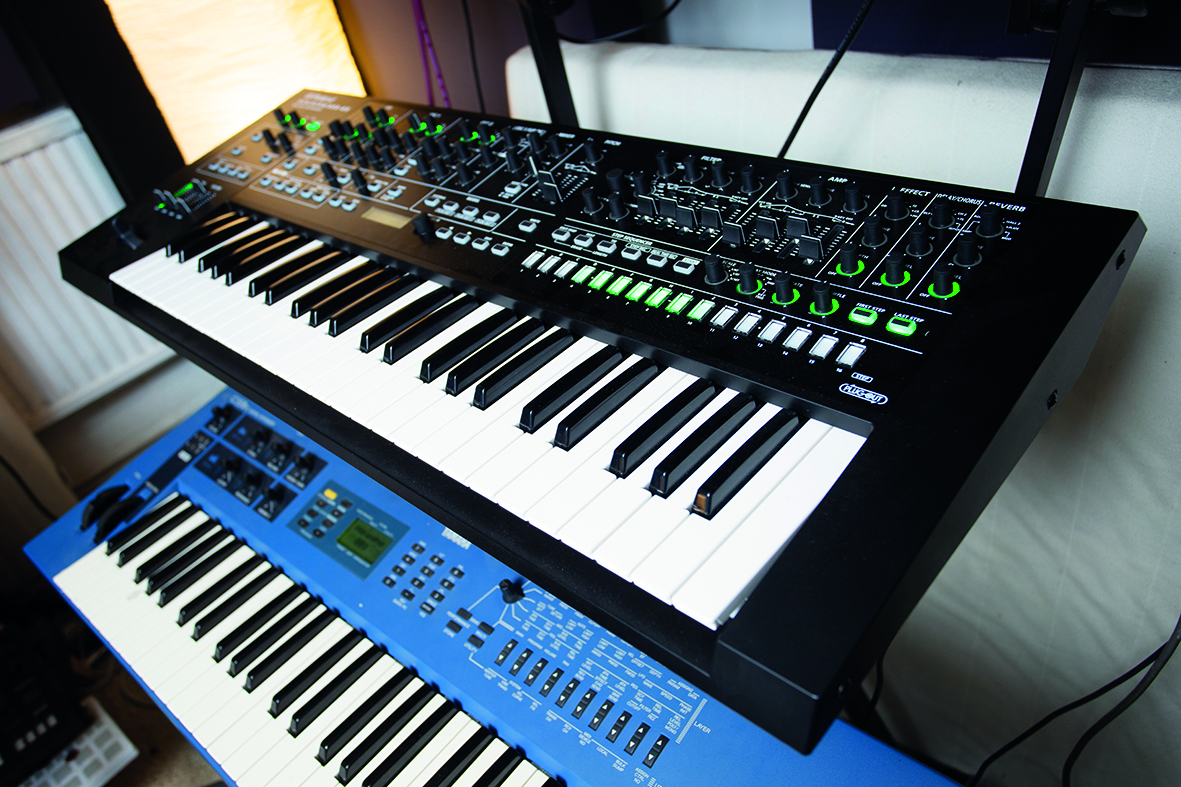
The bass is driving the tracks as much as the beats. Is that the main focal point when designing your tracks?
“Absolutely and most of the people who have written about my music have mentioned that. The trance and hard house era was all about the sound of driving basslines with a really swinging groove and that was what I always wanted to hear when I was dancing at clubs.
“I remember this one interview I read with Mark Bell of LFO saying that when he went to get his tracks mixed and mastered he’d be telling the engineers to keep pushing the bassline. They’d be saying, ‘You’re going to blow the compressor!’, but he’d just tell them to keep going and ended up with all these seminal basslines that everybody recognises. Since then, the whole idea of creating a bassline that really takes over a track has stuck in my head.”
Your Two Bruised Egos EP moves more in the direction of hard techno…
“I’m a DJ first and foremost – that’s always been my passion, but I play a lot of different things, from the slower ambient stuff to hard techno and everything in between. I feel that my productions are always likely to span a bunch of different genres, and if you’re going to recognise anything in my sound it will probably be the basslines that I make.”
Is writing the bassline your conception point?
“I usually go through some synth sounds and write a melody or find a nice a patch that I like and play around with that, or I’ll write a bass groove and build everything around it.
I’m more focused on building the peak or most recognisable parts of the track first
“I know a lot of people write their tracks in Ableton’s Session view and build the track up chronologically, but I tend to start from the middle and go backwards because I’m more focused on building the peak or most recognisable parts of the track first. For basslines I like using the x0xb0x, which is a Roland TB-303 clone but I’m trying to change things up now because I’m just starting to feel that the sounds I’m using are getting a little bit stale.”

It sounds like you get bored quite easily and are always looking for something new to inspire you…
“I’ve released ten tracks now but I already feel like I’ve rinsed a lot of the gear that I’ve been using. I’ve got some new stuff from Roland that I’m just starting to use like the SYSTEM-8 soft synth and I’ve started using a Roland SH-101 and the Korg Trident, which is a beautiful synth for deep pads and textures. The only thing that I don’t see myself changing is how I use Ableton and Push 2.
For me, you can get things done much more quickly and seamlessly in Ableton
“I’ve worked with people who write tracks in Logic and think that the internal plugins are amazing, so I can see the benefits, but when they’re bringing something in from a sample library it seems such a slow process that it would drive me mad. For me, you can get things done much more quickly and seamlessly in Ableton and I find that having an intuitive workflow is quite important to me.”
Do you mix the tracks yourself or with a mix engineer?
“For mixing, I’ll finish the tracks and send the stems to a mix engineer who I know who has some ridiculous pieces of equipment that I can’t afford like the Thermionic Culture Vulture. So he’ll tend to run them through some outboard that brings out the sound so much more before I send everything off to mastering. I wouldn’t classify myself as a tech geek – I’m still learning a lot about how to layer sounds to get them sounding completely different to how they originally did.
I use Plugin Alliance’s Brainworx pack, which has hundreds of different effects, or stuff from Waves and Soundtoys
“I have so little CPU on my computer because I tend to have ten different plugins on a sound and like using a lot different effects so that even a really famous sample is completely unrecognisable by the time I’ve finished with it. Plugin wise, I use Plugin Alliance’s Brainworx pack, which has hundreds of different effects, or stuff from Waves and Soundtoys.”

Now that you’ve moved heavily into production, do you see your DJ career taking more of a back seat?
“That’s what I’m battling with the most. You do the gigs to pay your wages but, so far, writing music hasn’t made me any money – if anything it’s costing me money because I have to spend a lot on artwork and getting the record pressed when I’m releasing stuff on my own label.
“I really want to spend more time making music but know that in order to do that I’d have to do less DJing. DJing is my passion and after a weekend of good gigs it feels like that’s what I should be doing, but there’s other times when I just want to sit down and write music and not have to do all of that travelling, so I’m a little bit confused myself.”
It must be satisfying to play your own music and get an immediate response from audiences though?
“That’s an incredible feeling although I actually enjoy it more when I see another DJ playing my music as I get to watch the reaction from the dancefloor. That’s a really nice way to experience my own music, but I don’t dance, I just sway to side to side [laughs].”
You have your label trUst Recordings, but do you see yourself working with other labels in the future too?
“It would have to be the right label – one that I feel a good connection with. I’m of the opinion that you should only work with people that you already know or have friendships with. I like the idea of having circles of friends who all lift each other up and can create a sound between them that’s recognisable.”

What’s the ethos behind trUst Recordings? It’s not just for your own releases as you’re signing other artists...
“I’m just trying to create good dancefloor music that will hopefully go on to stand the test of time. I’m not trying to reinvent the wheel, I just want people to trust me when I introduce artists to them that they may not have heard or become a huge fan of yet.”
There are lots of converging opinions on dance music. What’s your feeling about the club scene today?
“My biggest concern these days is that people are looking for stuff that’s instantly digestible – they listen to whatever’s big and then they throw it away and move on to the next thing. I feel that really has an impact on the quality of the music we listen to.
“Right now, hard techno has really kicked off again and the younger crowds are getting into it, but everything goes in a circle. The stuff that people listen to now is what I was listening to when I was 15 or 16 – people see it as fresh but it’s really not, it’s just regurgitated.”
Are there other areas of the industry you’d like to try?
“I’d like to do some remixing and I’ve been building a little portfolio of sounds that could potentially be used in film or an art performance. I play so much different stuff in my DJ sets that I don’t think it would come as a surprise to people if I wrote some downtempo or non-club music, and to have a sustainable career it’s always better to have as many creative arms as you possibly can.”
Saoirse's latest single, Gentle Romance, is out now on trUst Recordings.

